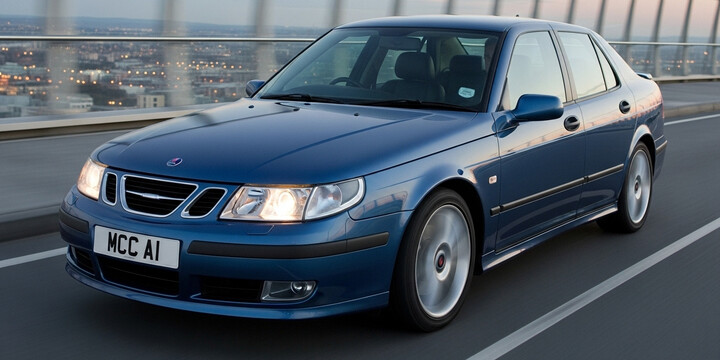
SAAB 9-5 (2006-09) 4DR SALOON 2.0T 150 LINEAR SE
The SAAB 9-5 (2006-09) 4DR SALOON 2.0T 150 LINEAR SE is a stylish and practical executive saloon that appeals to drivers looking for a comfortable, reliable vehicle with a touch of Scandinavian design. Positioned in the UK market as a premium family or professional car, this model is ideal for those seeking a refined driving experience combined with versatility for daily commuting or longer trips. Its sleek four-door saloon body offers ample space for passengers and luggage, making it a popular choice among families, commuters, or first-time car buyers who want something more distinctive than typical hatchbacks or smaller saloons.
What makes the SAAB 9-5 (2006-09) 2.0T stand out is its sophisticated design, smooth handling, and strong build quality. Known for its safety features and comfortable ride, this model offers a good balance of performance and economy—especially with the 2.0-liter turbocharged engine delivering 150 horsepower. Compared to rivals, it’s often praised for its solid reliability and unique Scandinavian styling, making it a popular choice for those who value comfort, practicality, and a touch of luxury. With an average previous ownership of around three to four owners and an average mileage of over 102,834 miles, the SAAB 9-5 remains a respected choice for drivers who want a dependable used saloon that combines elegant design with daily usability.

average use

The most recent mileage data for the Saab 9-5 (2006-09) 4DR Saloon 2.0T 150 Linear SE indicates that a significant portion of vehicles, 40%, have recorded mileages between 130,000 and 140,000 miles. Additionally, 20% of these vehicles each have recorded mileages within the ranges of 70,000 to 80,000 miles, 90,000 to 100,000 miles, and 120,000 to 130,000 miles. This distribution suggests a clustering around the higher mileage bracket of over 130,000 miles, possibly reflecting the age and usage patterns of this model, with a notable proportion of vehicles reaching and surpassing the 130,000-mile mark.

vehicle values

The data indicates that for the Saab 9-5 (2006-09) 4DR Saloon 2.0T 150 Linear SE, there is a notable distribution in private sale prices. Specifically, 60% of the vehicle sales occur within the £1,000 to £2,000 range, while 40% fall into the £2,000 to £3,000 bracket. This suggests that the majority of these vehicles are valued at the lower end of the private sale spectrum, which may reflect factors such as vehicle condition, mileage, or market demand for this model during the period analyzed.

production years

Based on the available data for the SAAB 9-5 (2006-09) 4DR Saloon 2.0T 150 LINEAR SE models, the majority of vehicles manufactured are from the year 2008, accounting for approximately 80%. A smaller proportion, around 20%, were produced in 2007. This suggests that most vehicles in this sample are slightly newer within the production range, with 2008 being the predominant model year.

colour popularity

The data indicates that the main paint colour for the SAAB 9-5 (2006-09) 4DR SALOON 2.0T 150 LINEAR SE is predominantly grey, accounting for 60% of the vehicles. Blue and black are equally represented, each making up 20%. This suggests that grey is the most popular choice among owners for this model, with a significant preference for classic, neutral tones. The relatively balanced distribution of other colours points to a diverse but less common range of colour preferences outside grey.

ownership cycle

The data indicates that for the SAAB 9-5 (2006-09) 4DR SALOON 2.0T 150 LINEAR SE, the majority of vehicles have either four or six registered keepers, each accounting for 40% of the sample. A smaller proportion, 20%, have only two registered keepers. This distribution suggests that most vehicles tend to change hands multiple times, often between four and six owners, which could imply a relatively higher turnover rate or usage pattern within this model.

engine choices

Based on the data for the Saab 9-5 (2006-09) 4-door saloon 2.0T 150 Linear SE models, all vehicles are powered by petrol fuel, with no diesel options reported. Regarding engine capacity, the majority of these vehicles (80%) have an engine size of 1990 cc, while a smaller proportion (20%) feature an engine capacity of 1985 cc. This suggests that most models share a common engine specification, with a minor variation.












